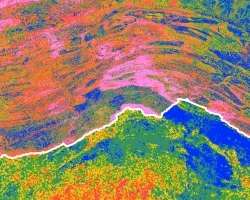
Chile is characterized by extreme climate variability ranging from the arid Atacama Desert, one of the driest places on earth, to the extremely wet Lake District that averages 2,535 mm of annual rainfall. In recent years, Chile has experienced abnormal climate conditions as record droughts and rapidly receding glaciers place an added strain on a historically limited water supply. With stakeholders from the water resources and agricultural communities relying on this limited reserve, the management of water in Chile has become increasingly important as the Ministry of Agriculture prepares for future climate variability. This project provided the Chilean Ministry of Agriculture with a case study evaluating the effectiveness of incorporating new NASA Earth observation datasets into the Google Earth Engine (GEE) platform to enhance drought-monitoring capabilities in Chile. To highlight the potential benefits of utilizing GEE to aid in drought monitoring and decision making, the team developed a tool within the GEE platform that aggregates data from the Soil Moisture Active Passive (SMAP) radiometer, the Moderate Resolution Imaging Spectroradiometer (MODIS), and the Advanced Microwave Scanning Radiometer for the Earth Observing System (AMSR-E) and the Advanced Microwave Scanning Radiometer 2 (AMSR2). Parameters derived from the remotely sensed data included soil moisture (SM), snow cover (SC), and snow water equivalent (SWE). The advantage of hosting this data in the GEE platform is that it is a collaborative cloud-based analysis tool, which allows users to share, store, and perform analysis on large volumes of data. GEE has the potential to transform the way in which geospatial information is studied and disseminated, improving upon the accessibility and breadth of the data currently available.



